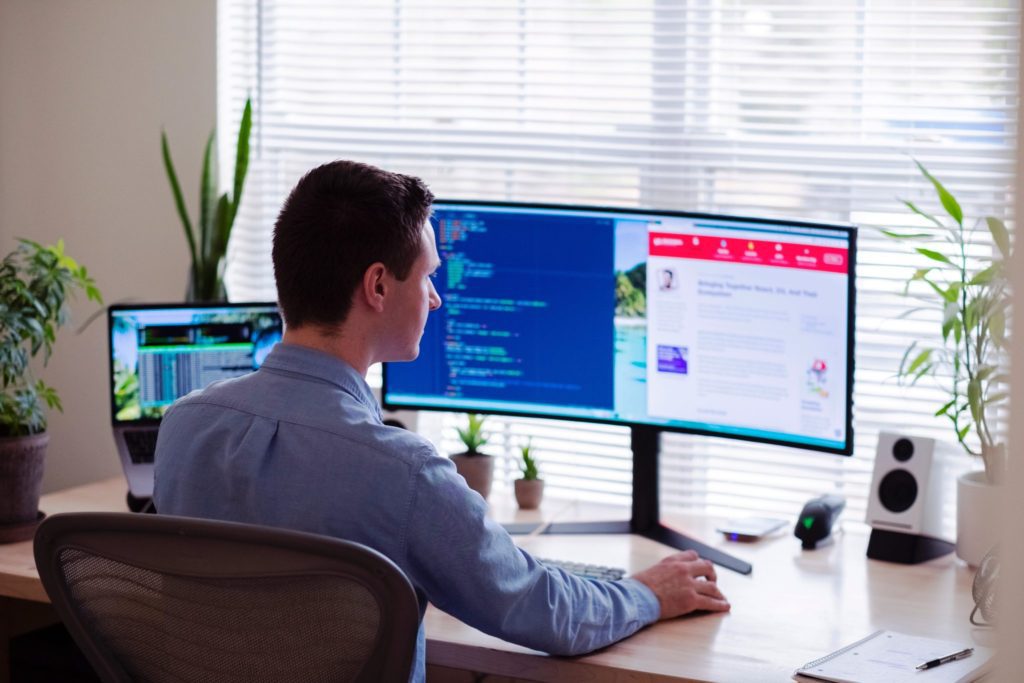In these unusual times of working from home, it is important to make sure you’re able to be efficient, effective, and continue working with the same level of security that you do when you’re in the actual “office”. Here is a short Virtual Office Checklist to ensure you’re making the most of working remotely:
VPN vs. Cloud
In today’s climate of critical data and security considerations there are multiple ways of staying connected, while still having direct access to your necessary files and information. A VPN, or Virtual Private Network connection may be required by your company to work inside their domain, while still being physically present remotely. These very secure connections use credentials, registered ports, and encrypted dataflow to ensure security and access are both in place. A downside of VPN connections is the possible blocking of other data-streams while in use, the possible overload of bandwidth from the dedicated link, and the reliance upon a remote network that is not inherently redundantly supported.
An alternative consideration for many working environments is cloud-based data-access, through a 3rd-party B2B partnership, like Microsoft or Google. With multi-factor authentication and encrypted file-sharing through server banks like Azure and AWS, companies can provide their working operations access to shared data, with security, convenience, and redundancy in mind. These cloud-based platforms allow people to connect wherever they are, as long as they have internet available. But, when dealing with highly sensitive content, it is wise to know that data being accessed is only as secure as the individual’s device that is accessing it. This is always a consideration to keep in mind.
The Right Applications
Another point of remote workplace consideration are the tools you are working with, which help provide a place to collaborate, share, communicate, track and save. In the past it seemed the simple suite of Microsoft Office was all we needed. Word, Excel and Outlook fit all of our needs… Well those days are long gone. While all of these software tools (or a complementary version) are still required for daily office work, each person also needs a place to connect face-to-face, chat, and meet with their counterparts and clients. From Microsoft Teams (which has seen over an 800% increase in utilization) to Zoom to Google Hangouts, the standardization around a shared collaboration platform is mandatory to the new virtual workplace.
While each platform has their respective strengths and weaknesses, it would seem that Microsoft has a leg up on its ability to combine the tools of Office, with the web-conferencing of Skype, with the chat functions of Slack, to the file collaboration of Google, with the people grouping capabilities of Facebook. This one-stop-shop, and the forced opportunity to engage with this all-in-one platform is certain to disrupt the market when businesses get back to business as usual.
To See or Not to See
… That is the question. One of the most common hardships from the virtual workplace is the ability to view content on larger and/or multiple displays, which the home-office might not typically provide. Many people have not made personal investments on secondary displays in their homes, which allow them to multitask and be much more efficient with their daily assignments. While this might seem like a small annoyance, work effectiveness can be compromised by as much as 20% of wasted time, bouncing between applications on a single screen. Combine this with inaccuracies from small, hard to decipher material and the relatively low investment costs for a secondary display might be recovered from even one costly mistake.
In simple language, don’t cheap out and not have a larger-format, secondary monitor for your home workplace. As an employer, it is worth the cost of investment to make sure your remote resources are equipped and prepared to be successful. Whether by letting them borrow a unit from the office while working remotely, or buying a low-cost option for them to stay productive… The bottom line is, this small, but key item can pay huge dividends, both with work efficiency/accuracy and also by “displaying” a culture that cares.
Putting The “Office” In “Home Office”
As you may have noticed, the key to office-style productivity in your home is using office-style technology. From the quality of your network connection to the available software, to your computer monitors; professional-grade systems enable professional work. Whether it’s the crisis du jour or because the car is in the shop, you can still be productive and proficient at home with the right tech. And that’s a virtual certainty.



